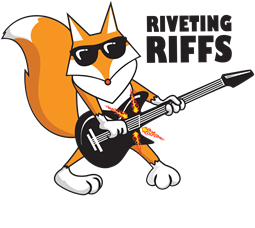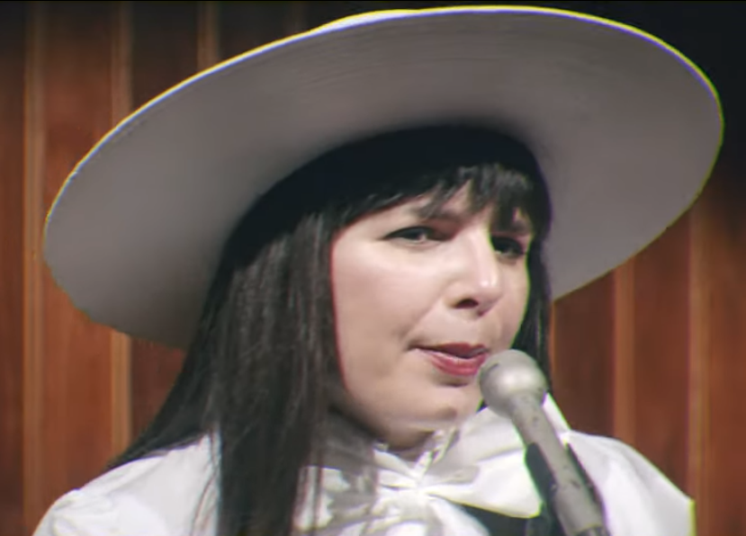

 |
Beth
Bombara - Americana Rock At It's Best |
|
We do not often think of the word
Evergreen, as summer is winding down, but Christmas came early this
year with a delicious album from Beth Bombara that bears that title. The
dual first tracks, which for the music video merge into one another, “I
Only Cry When I’m Alone,” and “Upside Down,” are well worth investing in
the album, so the listener can discover some other treasures.
Beth Bombara talks about those first two songs, “Social media has
changed how we interact socially and what I was really thinking about is
how it has enabled us to hide behind this curtain, minus emotion. If you
don’t want somebody to know that you’re sad you don’t have to post a
picture of you looking sad on the internet. Nobody has to know that you
are sad or upset. It is this idea of not letting people behind your
emotional curtain. That is what I was thinking about when I started
writing,” the she adds that you can also convey your true emotions, “I
have cried in front of other people before. It is capturing the idea
that it is a lot easier now than ever to let people see when you are
feeling sad.”
The band sounds really good and there is a live feel to this album.
Samuel Gregg plays electric guitar, Beth Bombara plays electric and
acoustic guitars, Kit Hamon, her husband plays bass guitar, Mike Schurk
keeps the beat on drums and percussion and longtime friend John Calvin
Abney plays piano and organ.
“My goal was to take the band that I tour with and go in and make an
album with them, with the addition of John Calvin Abney. He doesn’t come
on the road with us, because he is playing with more famous people than
me.
John Calvin Abney has been a friend of ours for a few years and we just
keep running into him. He has stayed at our house when he has been on
tour with his other projects. We have gotten to know him over the years
and I really wanted him to be involved,” says Bombara.
Today’s band is a long way from the first band that Beth Bombara was in,
“I met these girls who really wanted to be in a band and I had never
been in a band before. They
knew I played an instrument and they said we don’t know how to play
anything yet, but we are getting instruments for Christmas this year and
we are going to learn (She laughs).
I said that sounds like an adventure, sure I’m in. I started playing
with these girls and I wasn’t a very good guitarist at the time, but I
was learning how to write songs and how to put words to a melody and
chord progressions and all of that. I thought this sounds like a great
adventure, so let’s do it. I started a band with them and we started
getting offers to do gigs around Grand Rapids (Michigan) where I lived
and where I grew up. We just kept getting asked to play and further and
further away from home. I had recently gotten a driver’s license and
before we knew it we were driving all over the state of Michigan to play
shows. I have super fond memories of my first band. I was about
seventeen and I played in that band until I was twenty-one. It was like
a Punk band. The band was called
The Green Means Go.
Thinking back on it now I don’t think I ever had a clear moment when I
thought I am going to pursue this (music) as a career. I had been in
that band for four years and I ended up moving away. Since I was
seventeen there has not been a time when I have not been playing in a
band. I really enjoyed doing it and I met other musicians who wanted to
collaborate. It never stopped and it reached a point when I thought I am
always going to be in a band.
I (realized) it was something that I really enjoyed doing and
that I could do it as a career,” she says.
As for the album Evergreen
she says, “I hadn’t written anything for a while and I was in this weird
space after the last album (Map &
No Direction) – 2017). It was a downer subject wise and I guess it
was me working through this depressive point in my life and then I wrote
my way out of that. I felt I was in a much more positive headspace. I
needed to take a break, because we were out on the road a lot, so I said
I need to get away and I am going to go up into the mountains for a week
and clear my head. I wasn’t thinking about writing a new album I was
just thinking about getting away from things. While I was out there I
started to get some ideas for songs. “Evergreen,” was one of the songs
that I started working on when I was there.
It wasn’t an intentional thing
and I realized this is always going to be a part of my life. Whether I
am pursuing it professionally or not I am always going to pursue songs.
That is when I started working on the material for this album.”
One of the songs
that Beth Bombara wrote for
Evergreen is the fourth song on the album, “Tenderhearted,” which
can best be described as an Americana Rock tune.
She says, The song “Tenderhearted,” is one of those rare songs for me when I actually sat down and wrote the music and the lyrics at the same time. I was getting out of the house and finding random places to write. I have a friend who has a record store a couple of blocks from my house and I snuck in there one night after it was closed. I told my friend that I had broken into his store the night before and I hoped it was okay. I thought I am going to try this. It will be an interesting place to try and write. I sat in the record store and I ended up writing the whole song “Tenderhearted.” I brought it home and showed it to Kit and I said I wanted his feedback. I played it for him and he (her voice softens) said did you write a song about me? I said yes this is about our relationship in a lot of ways. I haven’t written a lot of songs like that, which were so pointed.”
Beth Bombara takes a few moments to talk about how she and Kit met, “I
had just turned twenty-one and we met in an artist residency program at
Martha’s Vineyard. We were in this residency program together and
working on music. We were forced to work together. At first I thought I
don’t think we really get along, but once I got to know him better and
deeper than surface level it became clear to me that we are extremely
different people musically. However, once we learned how to work with
that it is a really good compliment. It is a really good thing.”
As for working so closely with the man she loves, she says, “I think (it
helps). You can certainly show up to write with somebody that you have
never met before and write a song, but I think that it does help,
because he can see things from my perspective and we can throw out
ideas.
“There are absolutely challenges,” she says in response to our question,
“because we are working so closely together on such a personal thing and
for me it helps to separate those things. He has said to me things like,
I am speaking to you right now as your collaborative partner and then we
have had times when he has said to me, I am talking to you as your
husband and your life partner. Having that separation has really helped
to say this is work and to say this is personal. We both had to be very
mindful of making time for ourselves, alone time and making sure that we
get that, because we do work together so often.
It is a challenge, but I think finding that balance has been very
positive.”
The pace slows
down for the pretty “Does It Echo,” a song that boasts some incredible
“The music totally came first for “Does It Echo.” Generally speaking
that is how I write. There is no rule for me with songwriting. I might
try something that works and then it doesn’t work the next time that I
try it. “Does It Echo,” started off with just the music. I recorded a
demo at home that is just the guitar riff and I started to get an idea
of the melody in my head. With the band we worked it out and I said what
do you think the second guitar should sound like? We worked (those
things) out together. Then I ran into a wall and I was how does this
end? I need another part. We brought John Calvin Abney on board and he
produced the end of that song. I am not known for big instrumental
sections or jam outs. I am more focused on where is the melody. It was
really cool to have John and the rest of the band go you can totally do
this. This is cool. They worked with me to finish the end of the song.”
Evergreen
was recorded
and mastered at Jettison Studios by Dan Mehrmann, mixed by Jason Cupp,
produced by John Calvin Abney and Kit Hamon and co-produced by Beth
Bombara, Samuel Gregg and Mike Schurk.
“I have always respected Dan’s engineering and his studio is a very
comfortable space. He is very easy to work with, he is very professional
and I respect his views. We recorded one previous album with him. I had
a really good experience. His studio works very well for us to go in
with the whole band and track it live. I really wanted to get back to
doing an album that way. A lot had to do with me putting together a band
that I felt really clicked with each other. This group of musicians, the
newer band had never recorded an album together. We tracked everything
live,” explains Bombara.
As for who the album will appeal to she says, “I am a fan of gleaning my
favorite parts from older music and people whom I think have done great
work in the past (such as), Neil Young and Tom Petty who put out a great
album in the nineties. I take those sorts of musical vibes and make them
a little more modern. I am hoping that people who are super into music
from the sixties and seventies go there is no good music anymore. I
don’t listen to the radio. I am hoping it appeals to people in that
camp, as well as younger people. I hadn’t thought of it that way until I
met somebody at a show and they came up to me and said those exact
things to me. I used to go to shows in the seventies and I enjoyed them.
Now there isn’t anything on the radio that is original anymore
and there isn’t anything good. I don’t think that is true, you just have
to know where to find it. There is so much music that people don’t know
about.”
Please
visit the website for Beth Bombara.
Top Photo: Screen Capture from the music video for "I Only Cry When I'm Alone / Upside Down." Second and Third Photos by: Nate Burrell
|